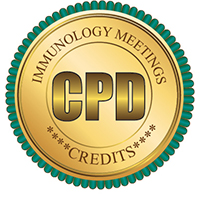Ljudmila Stojanovich
MD, PhD, Bezhanijska Kosa, University
Title: ANTIPHOSPHOLIPID ANTIBODIES: CLINICAL AND DIAGNOSTIC PROBLEM AS AN INTRIGUING NOTIONS ON IMMUNOLOGY
Biography
Biography: Ljudmila Stojanovich
Abstract
Antiphospholipid syndrome (APS) or Hughes syndrome are probably the most important paradigm of systemic autoimmune disease1. Although at present APS is a well-described, difficult-to-diagnose entity, it took many decades to define the diagnostic criteria.Early diagnosis is critical in avoiding major organ damage2. However, the lack of a gold standard test to confirm diagnosis often results in delays or misdiagnosis. Following the application of the Sapporo criteria, controversy arose because those criteria identify a more homogeneous group of APS patients at the expense of excluding another, a group collectively referred to as seronegative APS3. The latest classification criteria for diagnosing APS are the 2006 reviewed Sapporo criteria that require the presence of at least one clinical manifestation and one positive laboratory criteria. Following the application of the Sapporo criteria, controversy arose because those criteria identify a more homogeneous group of APS patients at the expense of excluding another, a group collectively referred to as seronegative APS3. The need for more guidelines regarding the detection of LA is now fulfilled by the SSC updated guidelines. There are recent studies present on the most promising antibodies of this heterogeneous aPL family4. Nowadays, APS is increasingly recognized as a multisystem disease, the clinical expression of which may include (many non-criteria) cardiac, neurological, haematological, cutaneous and other manifestations4. There are transition from APS to SLE with secundary APS (sAPS). Special attention shoud be given to secundary APS patients when they are submitted to high-risk events: from 7-10% patients with PAPS may go on to develop SLE. Despite updates of the diagnostic criteria, the diagnosis of SLE and APS remains difficult.

